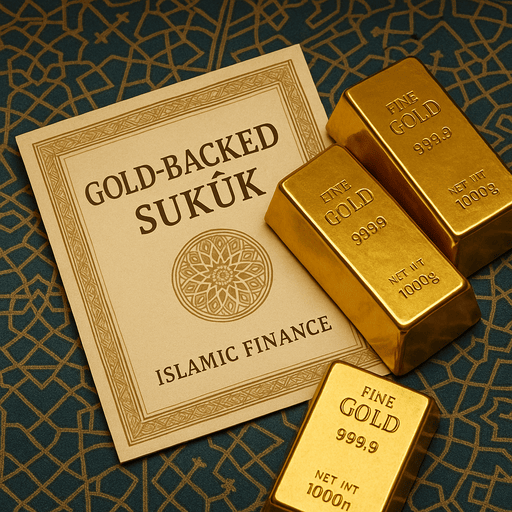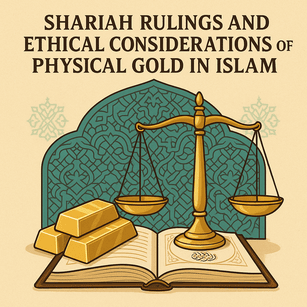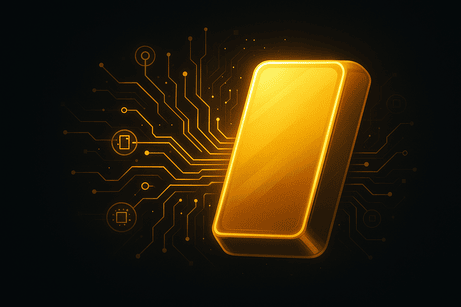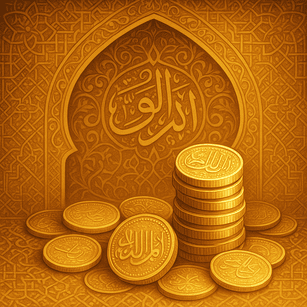Introduction
As Islamic finance continues its rapid growth, investors and institutions alike are seeking Shariah-compliant instruments that combine the stability of precious metals with the transparency and yield potential of modern capital markets. Gold-backed sukūk represent a compelling bridge between centuries-old traditions of gold ownership and today’s sophisticated financial engineering. This post explores how gold sukūk work, their benefits, and considerations for investors looking to diversify within an Islamic framework.
1. What Are Gold-Backed Sukūk?
- Definition of Sukūk
Sukūk (singular: sakk) are Islamic financial certificates that convey proportional ownership in an underlying asset or enterprise, rather than representing debt with interest. - Gold-Backed Structure
In a gold-backed sukūk, the underlying asset is physical gold held in trust by a special-purpose vehicle (SPV). Investors purchase sukūk certificates, thereby acquiring undivided ownership shares of the gold inventory. - Key Features
- Asset-Ownership Model: Investors hold a direct claim on physical gold, ensuring real asset backing.
- Periodic Distribution: Income is generated via lease (ijārah) or sale-and-repurchase (bayʿ al-sarị̄fah) agreements, producing rental or margin returns.
- Shariah Oversight: A panel of scholars certifies that all transactions—from storage and valuation to distribution—adhere to Islamic principles.
2. Mechanisms of Return
- Ijārah (Gold Leasing)
The SPV leases the physical gold to a corporate lessee (often a bullion trader or refinery) at an agreed rental rate. Periodic lease payments flow to sukūk holders as profit distributions. - Bayʿ al-Sarị̄fah (Gold Trade Financing)
Alternatively, the SPV may sell gold on a deferred-payment basis to a buyer, then immediately repurchase the same quantity on a spot basis. The price difference creates a return for sukūk investors, akin to profit on sale financing. - Hybrid Structures
Some issuances combine leasing and trade financing to optimize yield while balancing liquidity and asset utilization.
3. Benefits for Investors
- Tangible Asset Backing
Unlike conventional bonds, gold-backed sukūk are fully collateralized by physical gold, reducing default risk and offering a hedge against currency depreciation. - Shariah Compliance
The elimination of interest (riba) and speculative elements aligns these instruments with Islamic ethical standards. - Inflation Protection
Gold’s historic ability to preserve purchasing power makes sukūk an attractive diversifier in portfolios exposed to inflationary pressures. - Liquidity and Tradability
Many gold sukūk are listed on Islamic bond markets (e.g., the Dubai Financial Market or Bursa Malaysia), enabling secondary-market trading and price discovery. - Regular Income
Lease-based returns or margin profits provide predictable cashflows, suitable for income-oriented investors and Islamic institutions managing liquidity.
4. Key Considerations and Risks
- Storage and Custody
Secure vaulting with reputable custodians is essential. Investors should review audit reports and insurance coverage to confirm the gold’s existence and purity. - Market Volatility
While gold tends to be less volatile than equities, sukūk prices can fluctuate with global gold spot rates and changes in lease rates. - Counterparty and Operational Risk
The performance of the corporate lessee (in an ijārah structure) or the SPV’s operational soundness directly affects returns and asset safety. - Shariah Governance
Differences in fatāwā (legal opinions) across jurisdictions may lead to variations in sukūk structure. Ensuring recognized Shariah board endorsements is vital.
5. Case Study: A Landmark Issuance
In 2023, a leading Gulf state government raised USD 200 million through a ten-year gold sukūk. The SPV acquired 3,000 kilograms of 99.99% pure gold, leased it to a sovereign-backed refinery at 2.75% p.a., and listed the sukūk on the regional Islamic bond exchange. Annual lease revenues funded semi-annual distributions, while an embedded call option allowed early redemption against prevailing gold spot prices. This structure demonstrated how sovereign credibility, clear asset ownership, and robust Shariah governance can coalesce into a successful gold-backed sukūk program.
Conclusion
Gold-backed sukūk exemplify the fusion of Islamic finance principles with real-asset security, offering investors a halal, inflation-resistant, and income-producing instrument. By understanding their structure, benefits, and risks—alongside best practices for custody and Shariah oversight—both institutional and retail investors can harness the stability of gold within a modern, ethical financial framework. As Islamic capital markets continue to innovate, gold sukūk are poised to play a central role in portfolio diversification and risk management for Muslim and non-Muslim investors alike.





